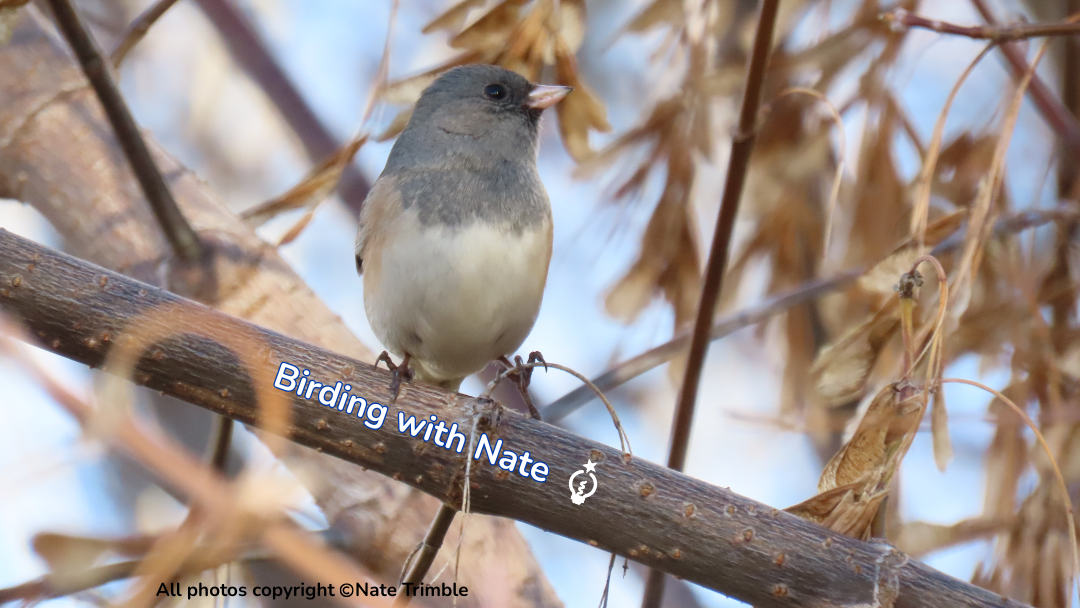Birding with Nate — July Bird of the Month: Northern House Wren
Birding with Nate
July Bird of the Month: Northern House Wren
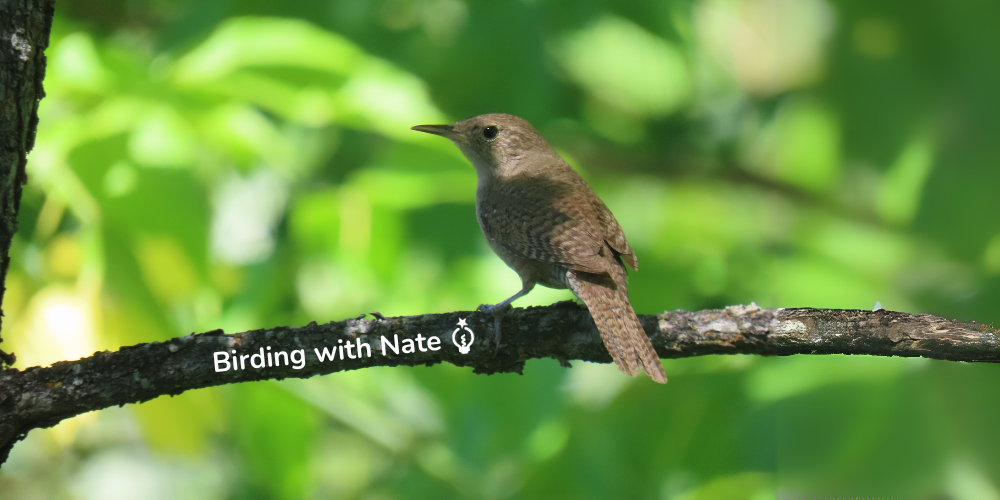
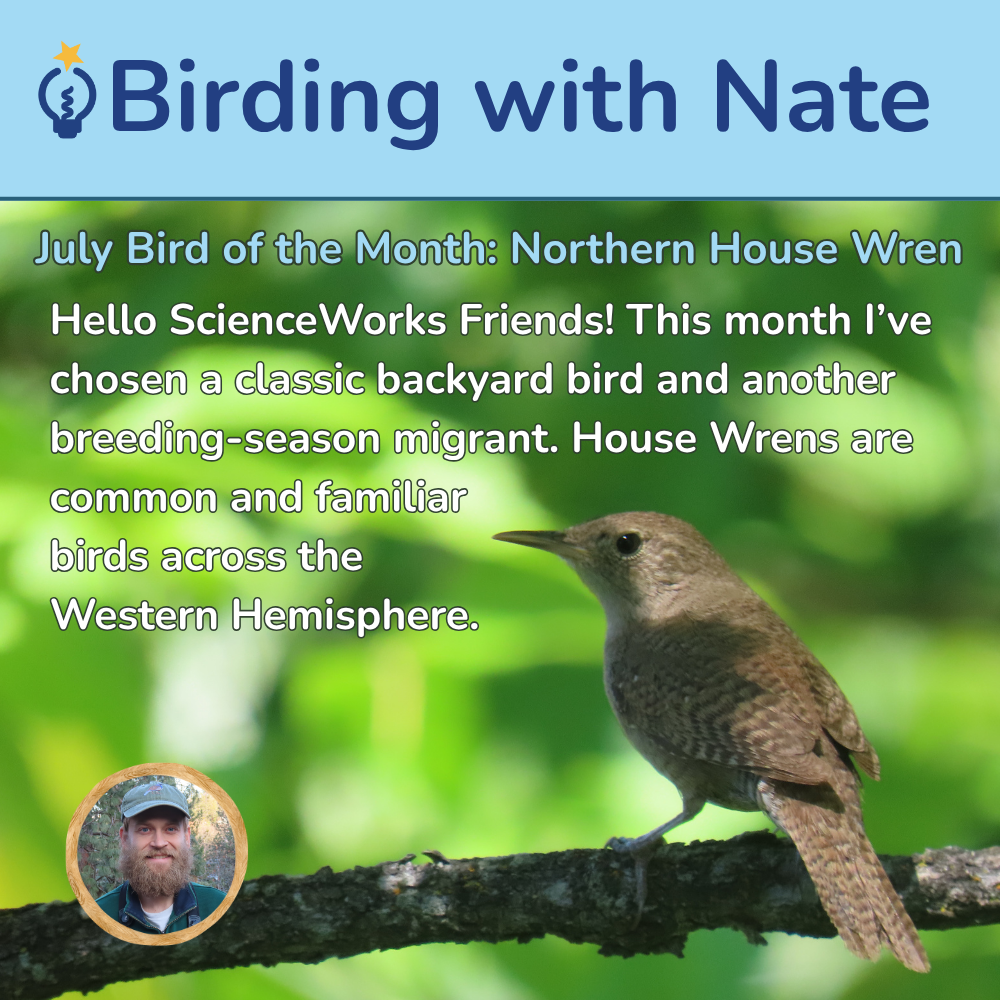
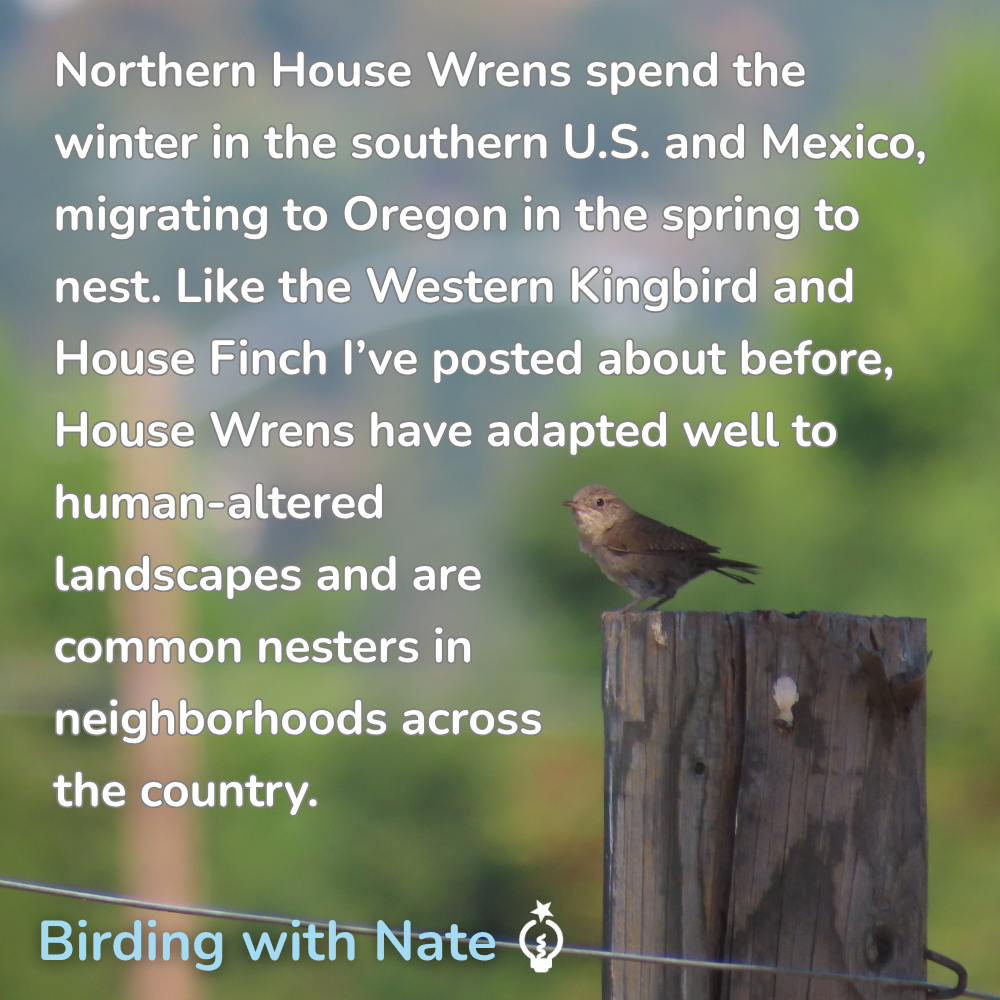
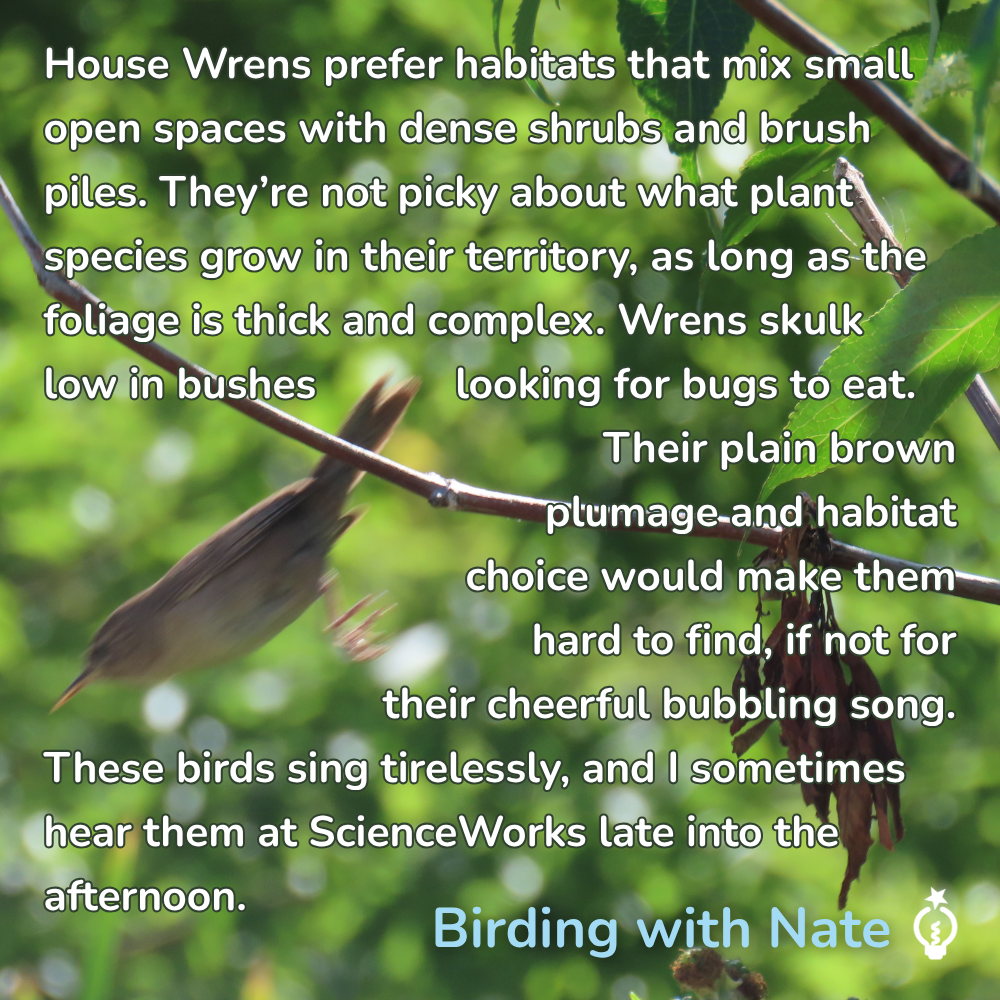
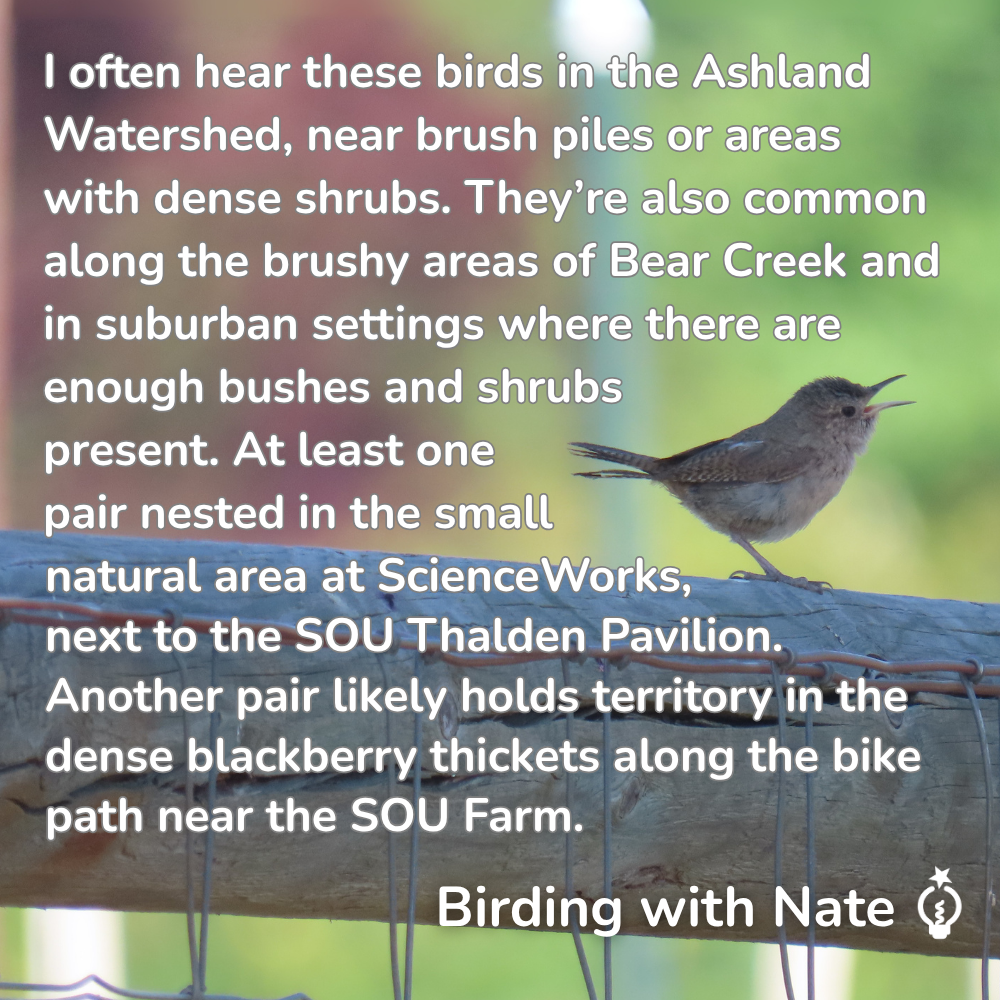
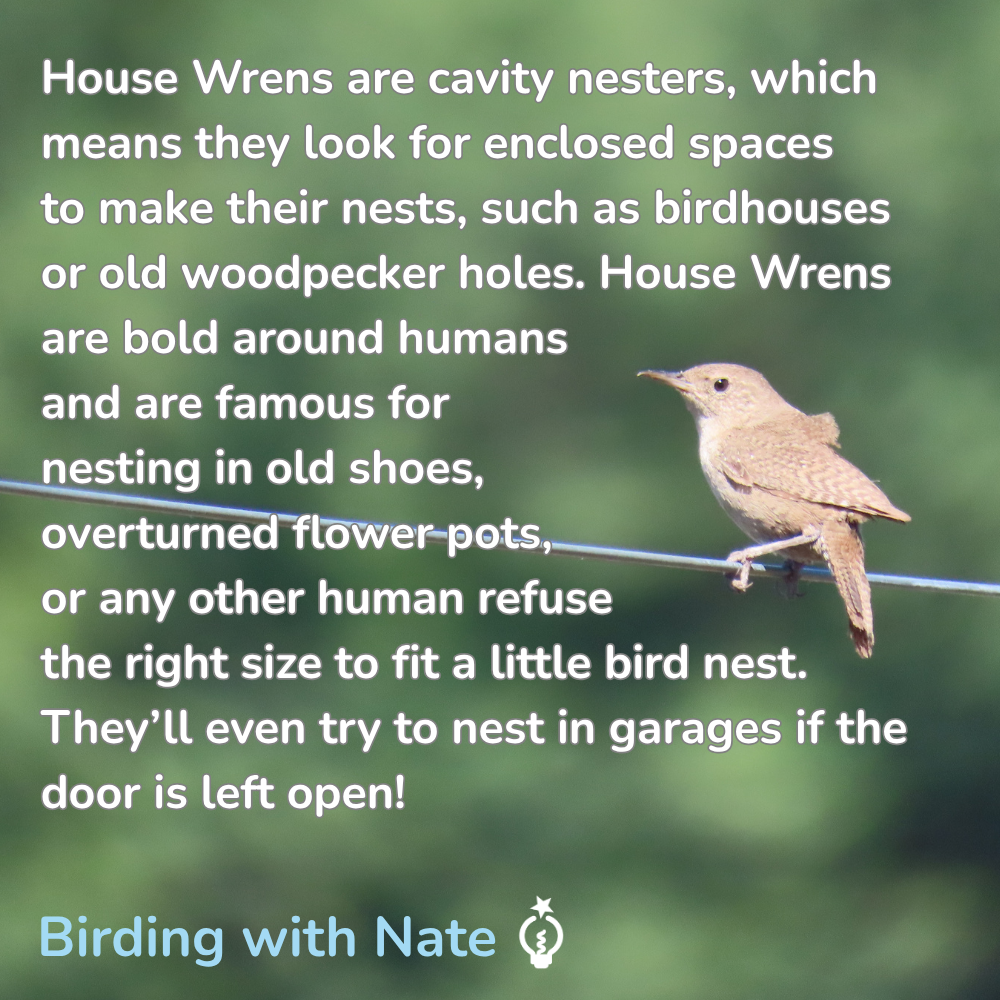
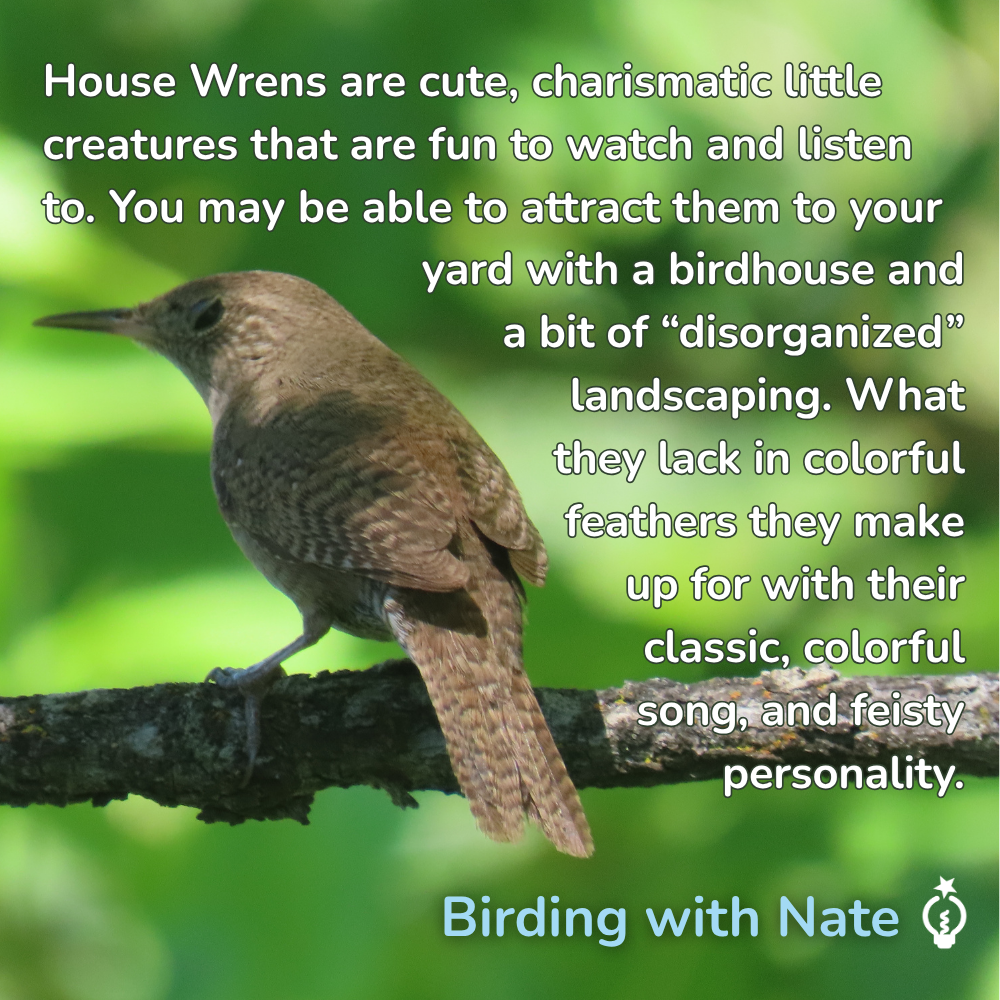
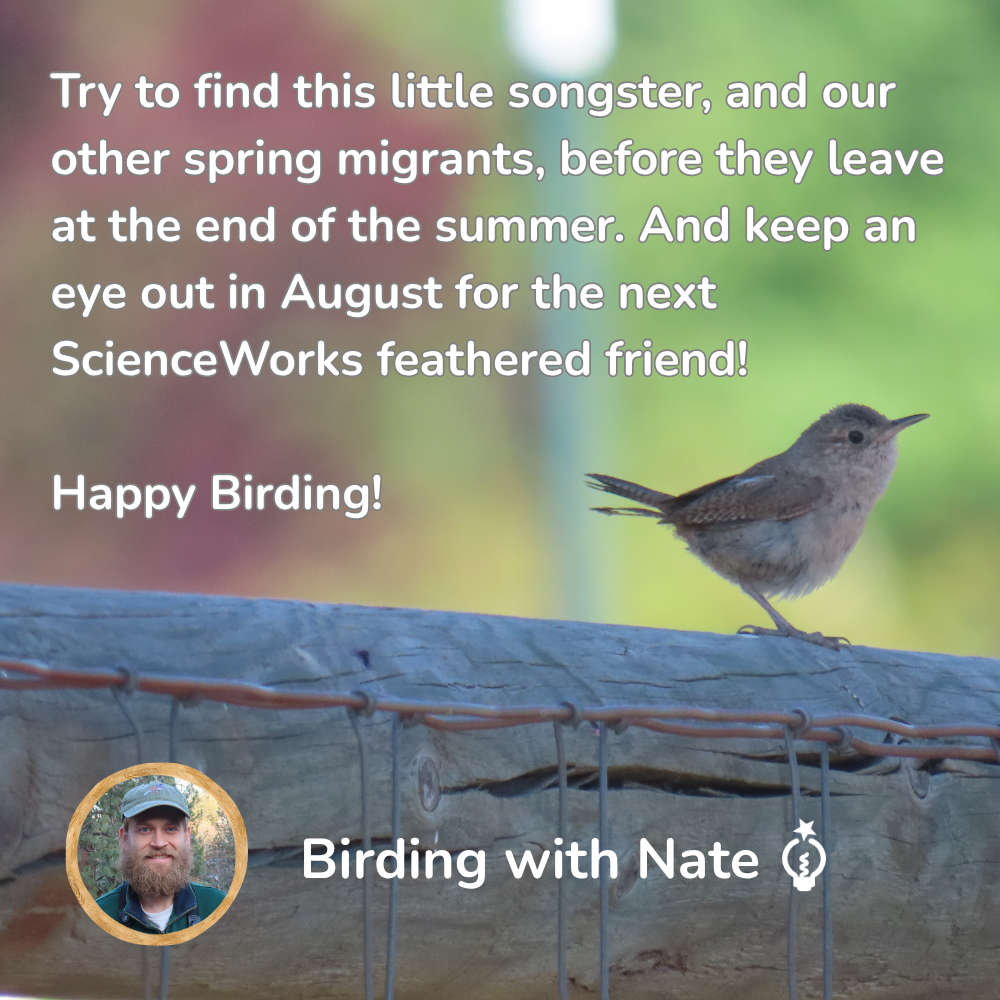
Slide 1
July Bird of the Month: Northern House Wren
Hello ScienceWorks Friends! This month I’ve chosen a classic backyard bird and another breeding-season migrant. House Wrens are common and familiar birds across the Western Hemisphere.
Slide 2
Northern House Wrens spend the winter in the southern U.S. and Mexico, migrating to Oregon in the spring to nest. Like the Western Kingbird and House Finch I’ve posted about before, House Wrens have adapted well to human-altered landscapes and are common nesters in neighborhoods across the country.
Slide 3
House Wrens prefer habitats that mix small open spaces with dense shrubs and brush piles. They’re not picky about what plant species grow in their territory, as long as the foliage is thick and complex. Wrens skulk low in bushes looking for bugs to eat. Their plain brown plumage and habitat choice would make them hard to find, if not for their cheerful bubbling song. These birds sing tirelessly, and I sometimes hear them at ScienceWorks late into the afternoon.
Slide 4
I often hear these birds in the Ashland Watershed, near brush piles or areas with dense shrubs. They’re also common along the brushy areas of Bear Creek and in suburban settings where there are enough bushes and shrubs present. At least one pair nested in the small natural area at ScienceWorks, next to the SOU Thalden Pavilion. Another pair likely holds territory in the dense blackberry thickets along the bike path near the SOU Farm.
Slide 5
House Wrens are cavity nesters, which means they look for enclosed spaces to make their nests, such as birdhouses or old woodpecker holes. House Wrens are bold around humans and are famous for nesting in old shoes, overturned flower pots, or any other human refuse the right size to fit a little bird nest. They’ll even try to nest in garages if the door is left open!
Slide 6
House Wrens are cute, charismatic little creatures that are fun to watch and listen to. You may be able to attract them to your yard with a birdhouse and a bit of “disorganized” landscaping. What they lack in colorful feathers they make up for with their classic, colorful song, and feisty personality.
Slide 7
Try to find this little songster, and our other spring migrants, before they leave at the end of the summer. And keep an eye out in August for the next ScienceWorks feathered friend!
Happy Birding!
And don't forget to add your own bird sightings to the ScienceWorks eBird Hotspot!





